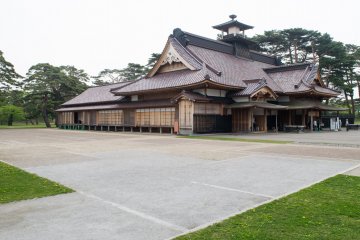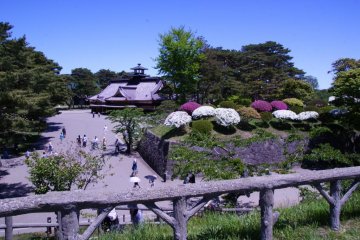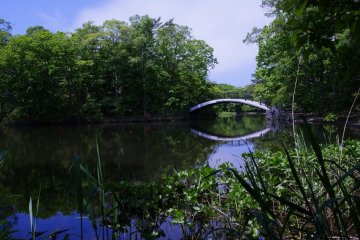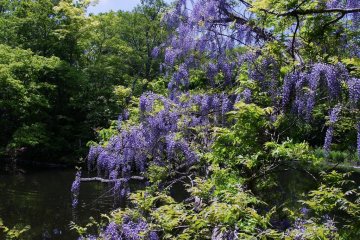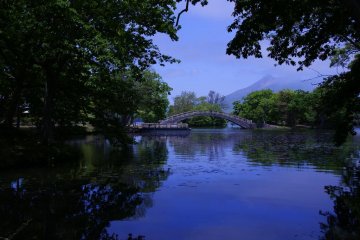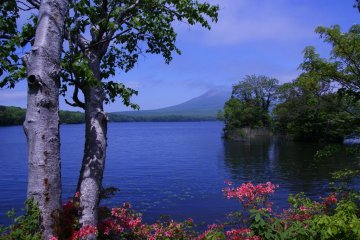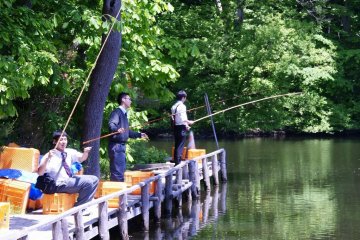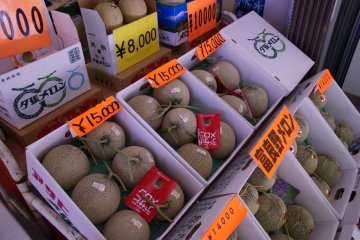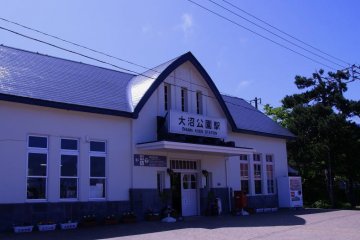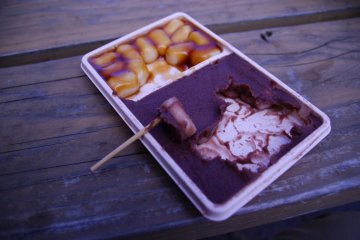My last day in Hakodate included one final day trip during my stay in Hokkaido. Although Hakodate is a small city, it’s still nice to get away, even if it from a place with a little less hustle and bustle than other cities in Japan.
I had been traveling by train – a lot – and was thankful that my trip north of the city only took 20 minutes. Truth be told, while it was a quick and convenient journey on the limited express train, my return trip to the city on the local line only took 35 minutes and was considerably more scenic as the tracks ran alongside Lake Konuma.
The Hakodate Line took me to Onuma Lake, Konuma Lake and the dormant volcano known as Mt. Komagatake. Referred to as Onuma Quasi-National Park, the area is best seen on foot as the trails you really want to experience don’t allow for bicycle travel.
When you arrive at Onuma Koen Station, you could rent a bicycle and take the one hour, nine mile pathway that circles Onuma Lake or you could do as I did and head out on foot. From the station I walked straight ahead, past the Japanese sweets shop and took the first left. Within minutes I arrived at the starting point of what would turn out to be a two hour walk.
Nature, combined with a Japanese proclivity towards infrastructure and a love of photography means that the numerous tiny islands which dot the lake are connected by a series of picturesque bridges. In amongst the trails are myriad places to stop, take a rest and photograph the scenic beauty of the area. I was fortunate in that there were low lying misty clouds which wisped past the peak of Mt. Komagatake.
I returned to the starting point of my trek and moved east, past the pleasure boat tour center and farther down the paths that in this particular area were paved. After taking a short break near the fishing pond where teenagers dropped their lines attempting to reel in a trout or two, I made my way back to the station.
Before I hopped back on the train, I walked past a fruit stand to see the elusive and prohibitively expensive Yubari, priced at a staggering ¥15,000 per melon. I headed past an ice cream stand and decided I wasn’t really in the mood for squid ink ice cream. However, I could not resist stepping into the sweet shop and trying a salty and sweet confectionery served in tiny little trays.
The tray, divided into two sections, contained small cubes of mochi (sort of like a Japanese rice-based marshmallow). The caramel colored section was both sweet and a little salty, on the cusp of being savory. And the red colored section, sweetened with azuki bean paste, was a delicious way to end my hike and my final day trip in Hokkaido.




